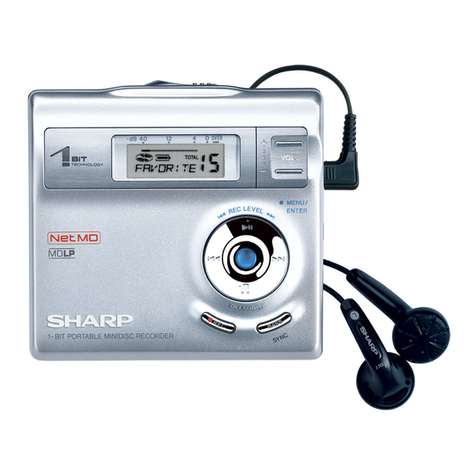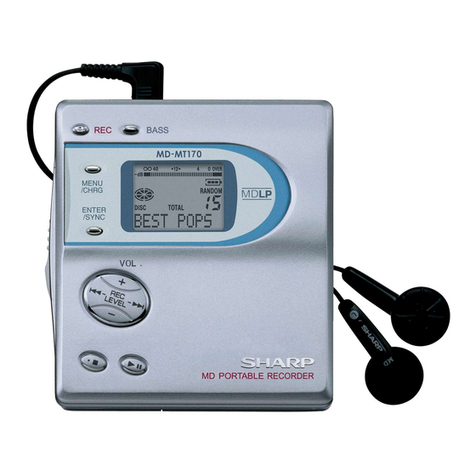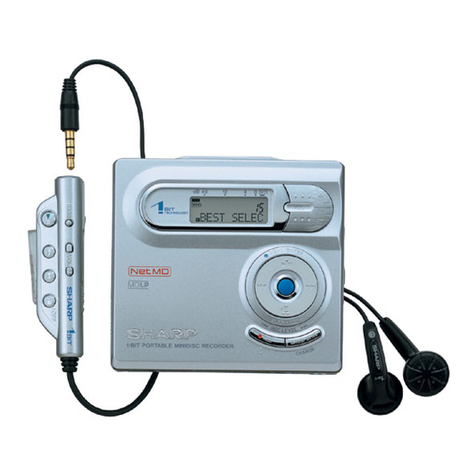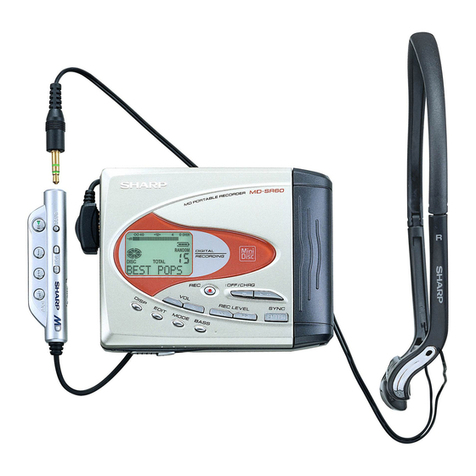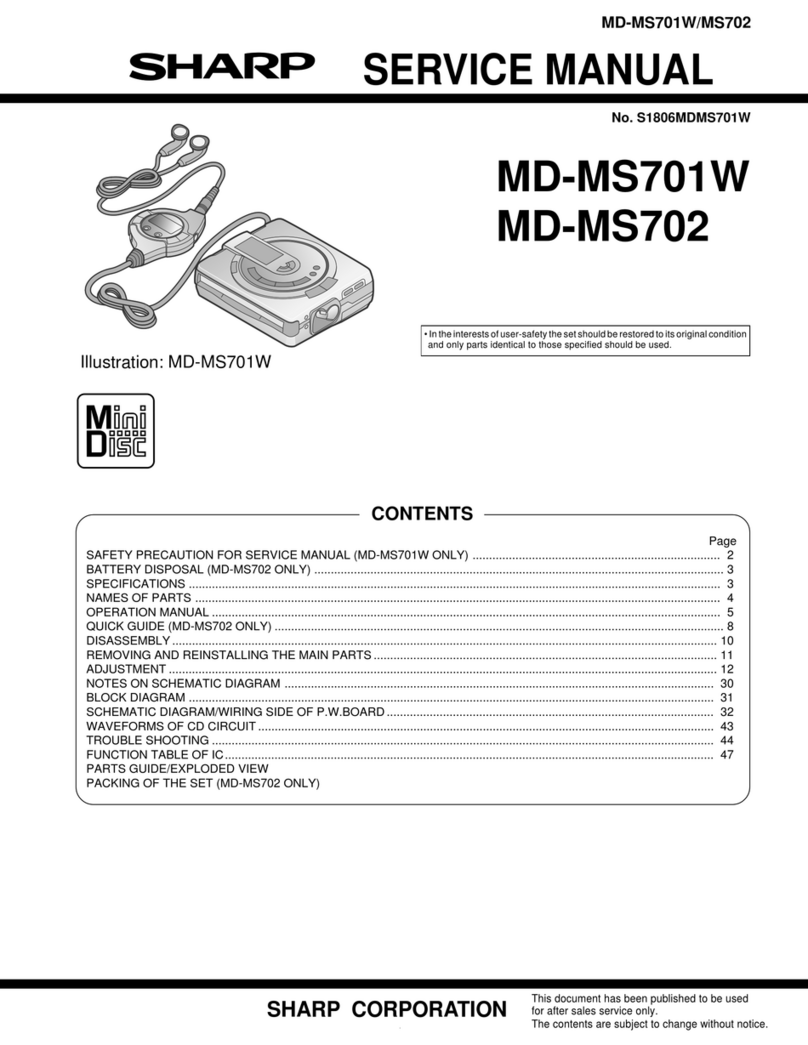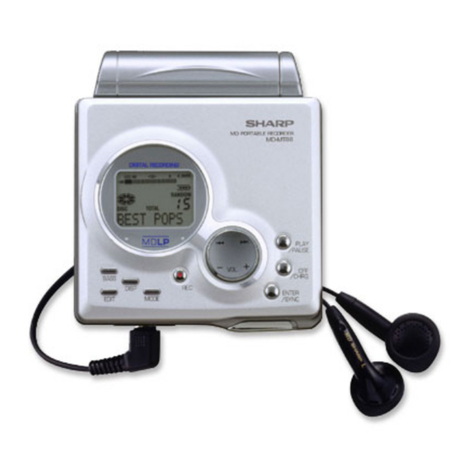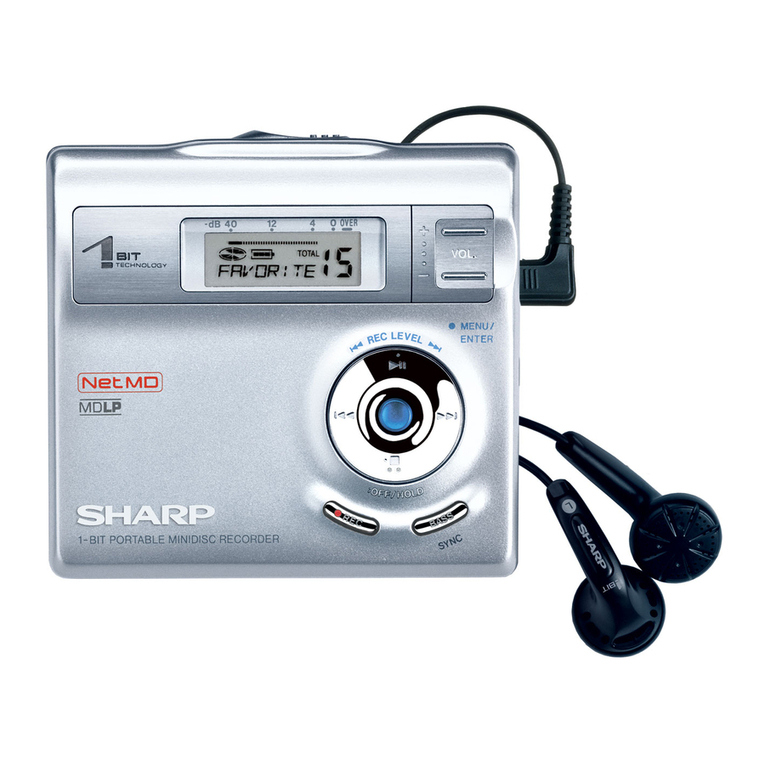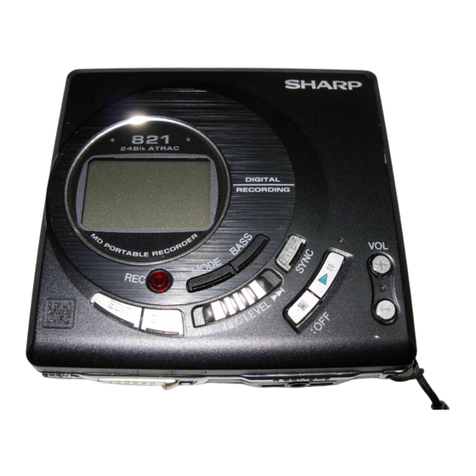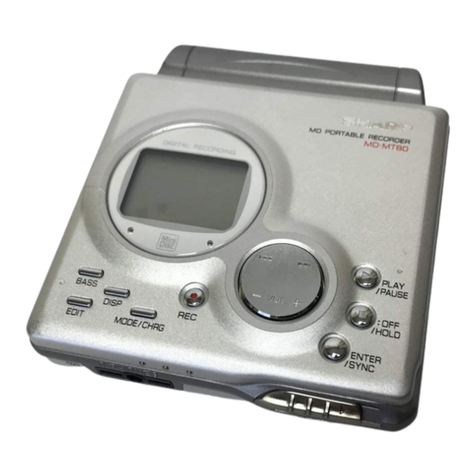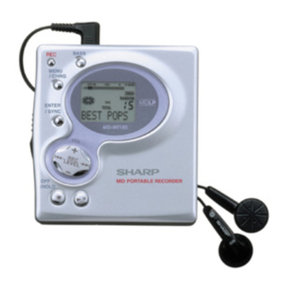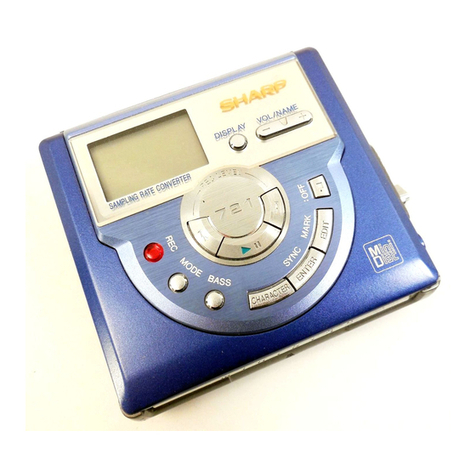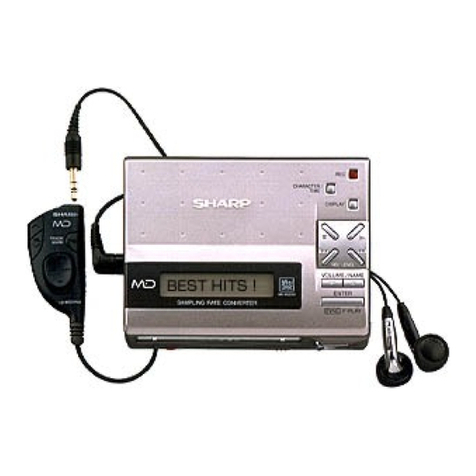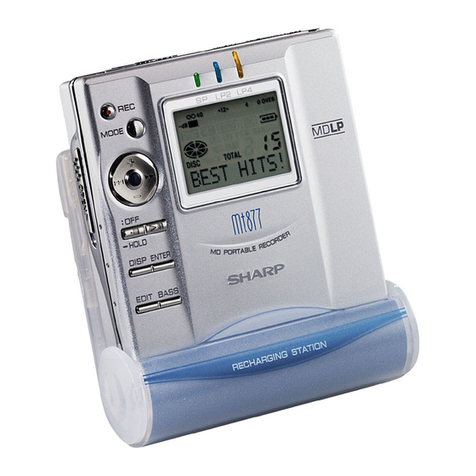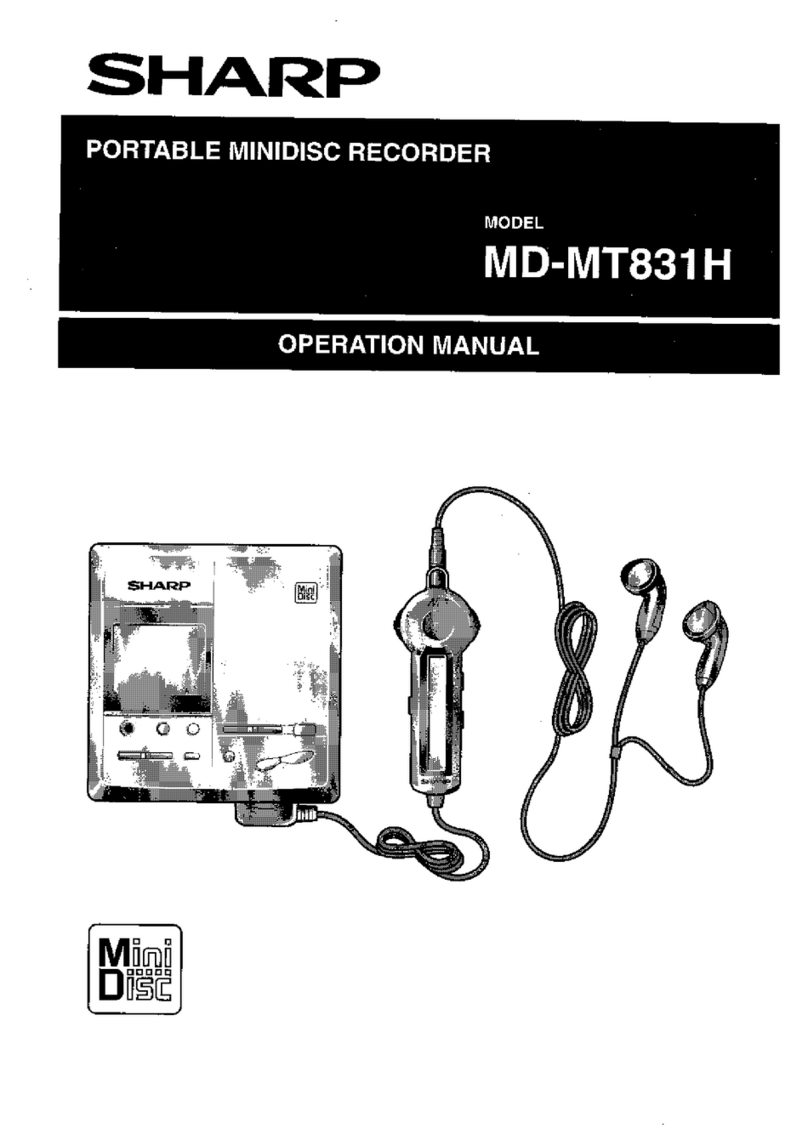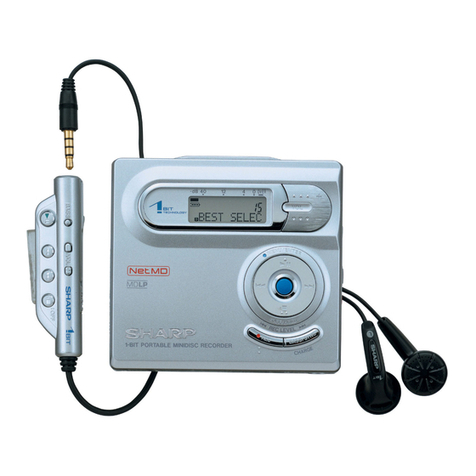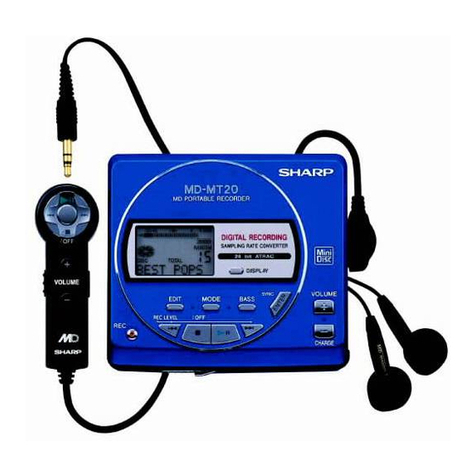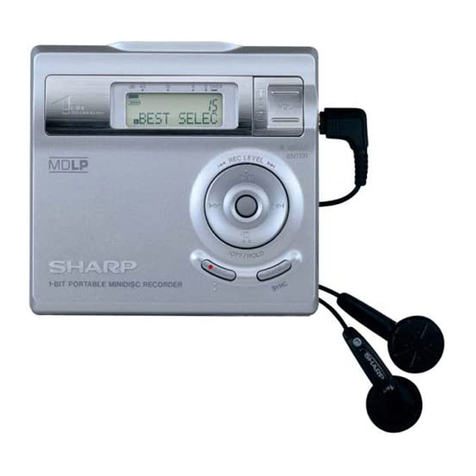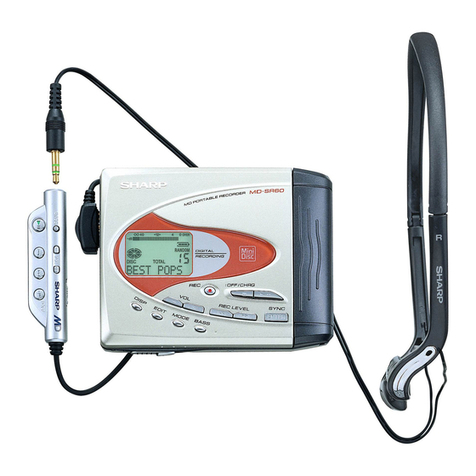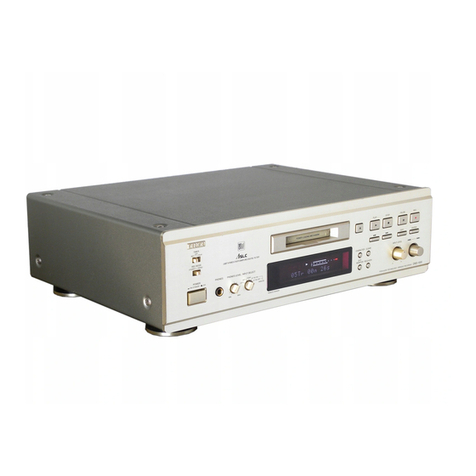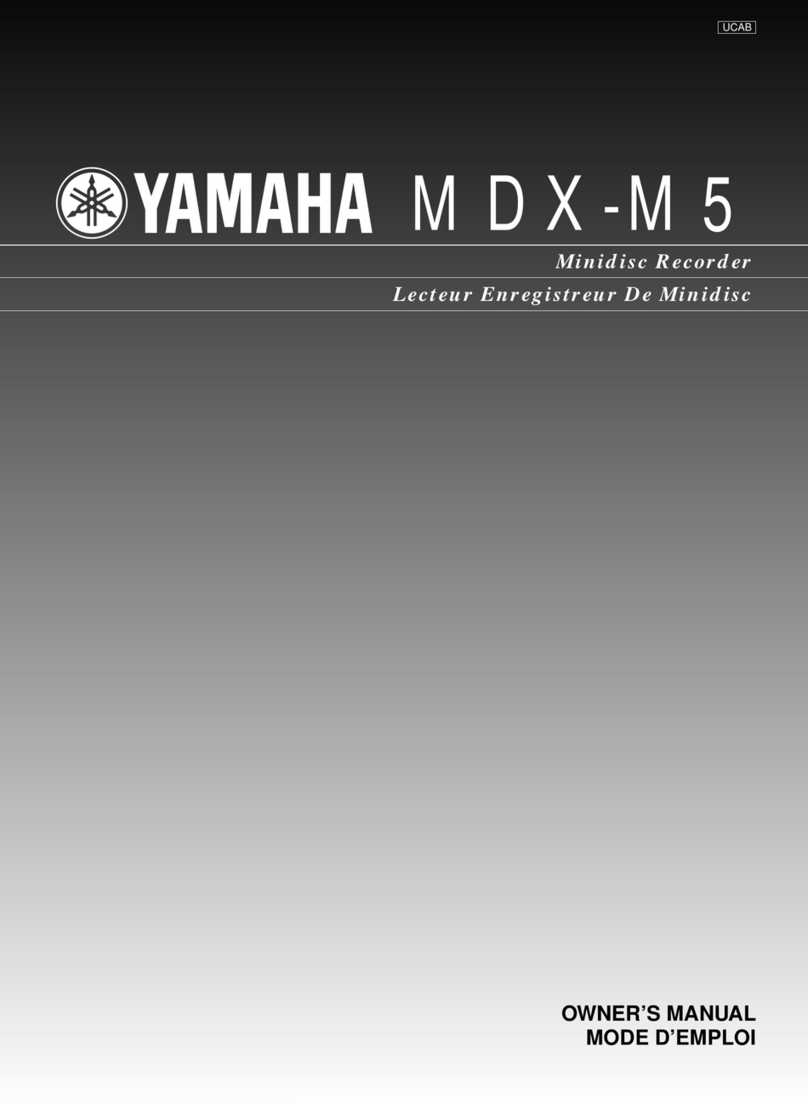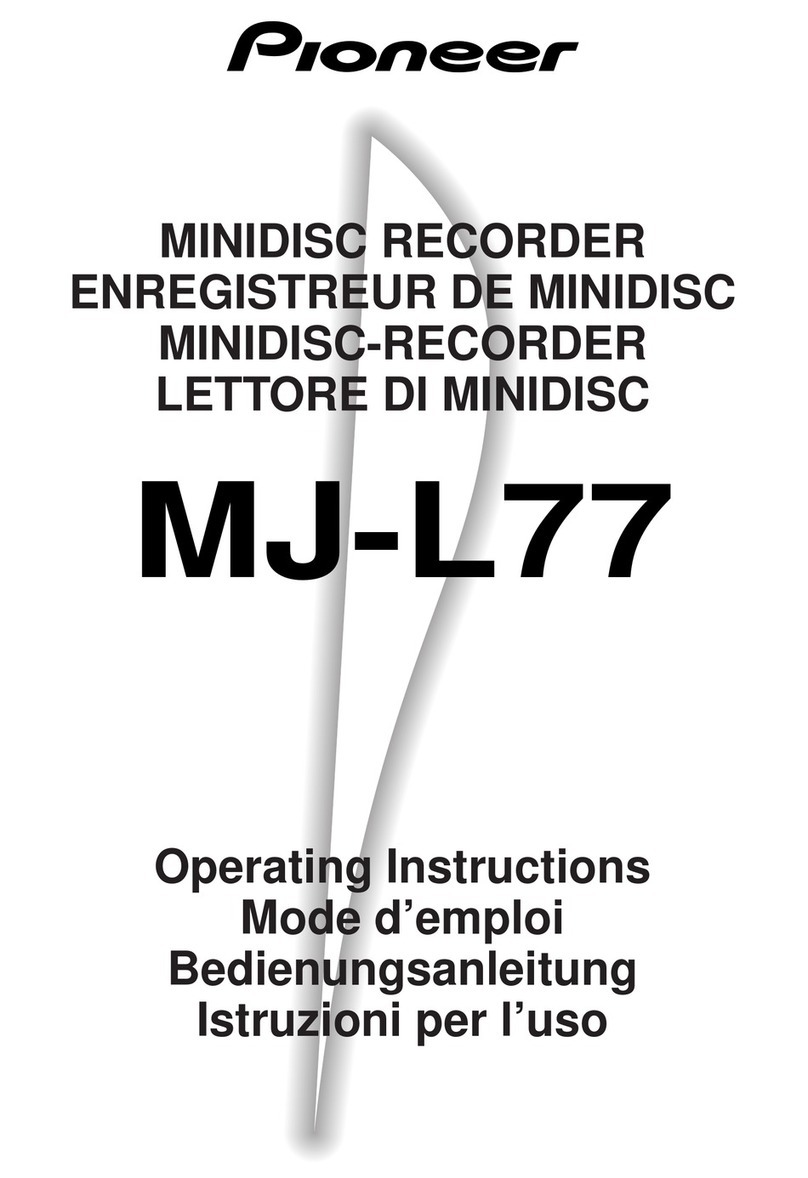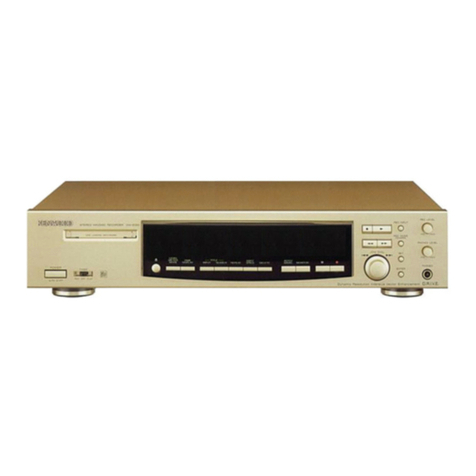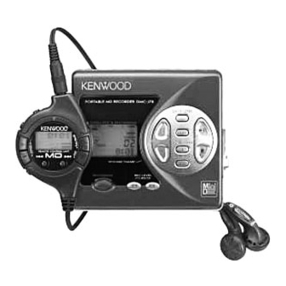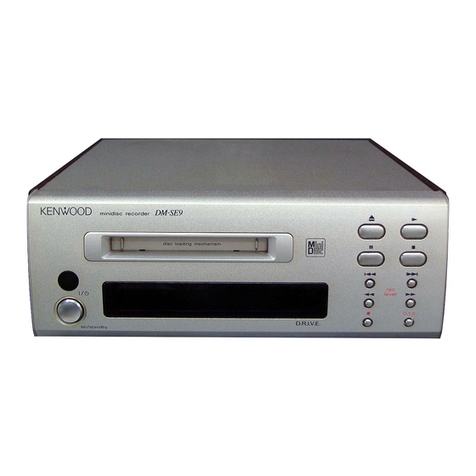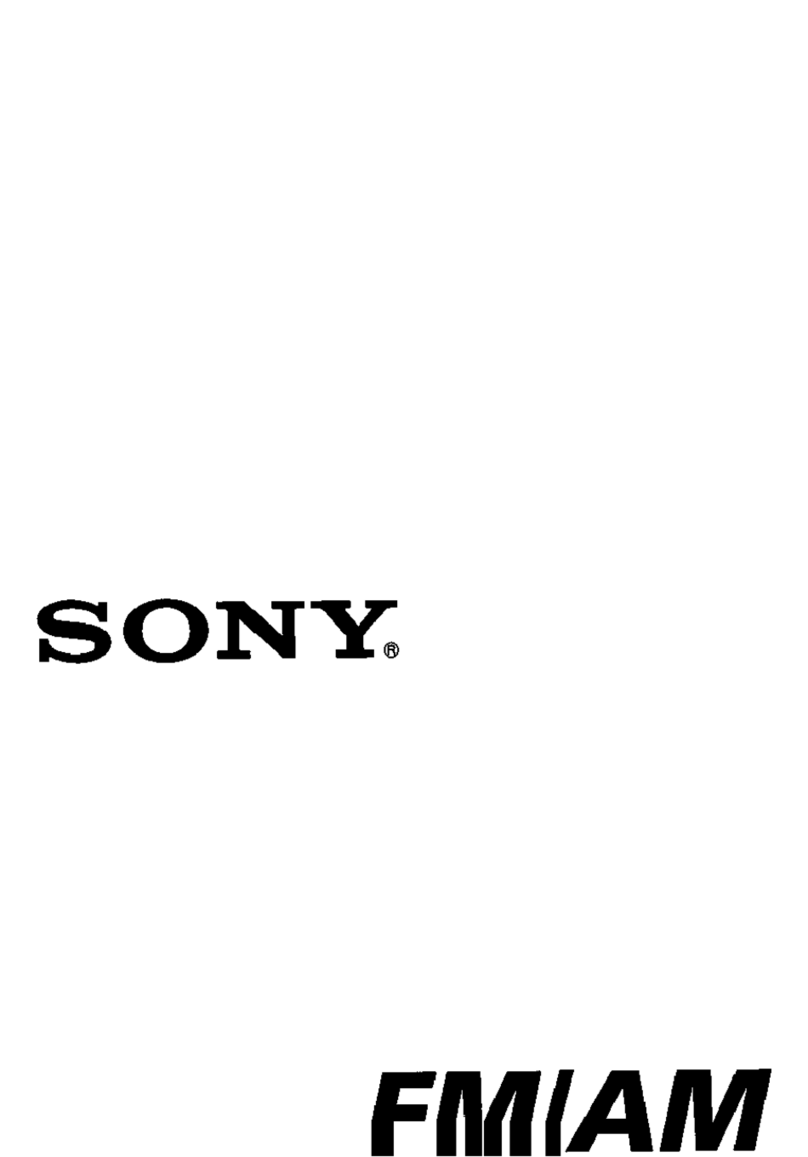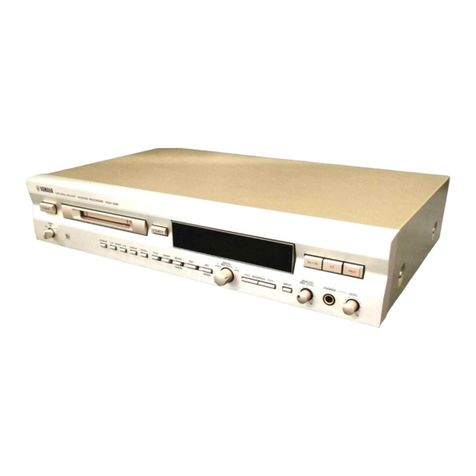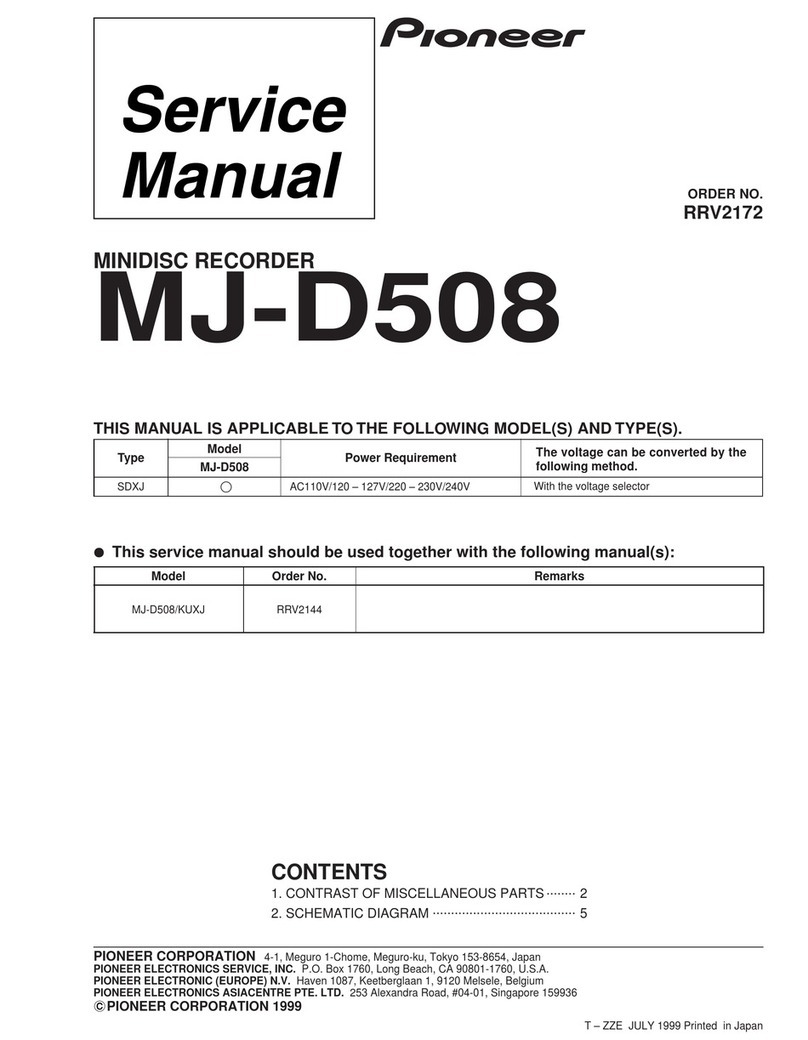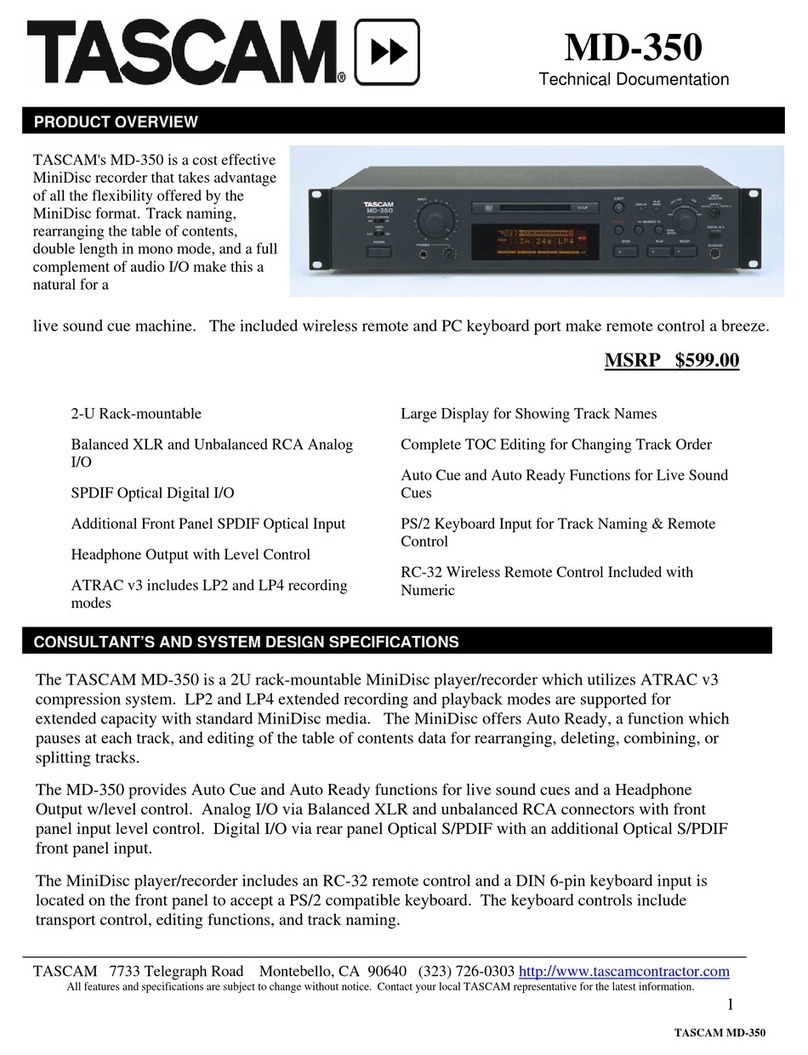
MD-R3
– 2 –
General
Type: MD/CD Deck
Power source: AC 120 V, 60 Hz
Power consumption: 20 W
Dimensions: Width: 16-15/16" (430 mm)
Height: 4-11/16" (118 mm)
Depth: 11-15/16" (302 mm)
Weight: 11.3 lbs (5.1 kg)
Input jacks
Output jacks
LINE IN Pin jack Over 680 mVrms 170 mVrms
22 kohms
OPTICAL Square
IN (Optical)
optical
connector
COAXIAL Pin jack 75 ohms 500 mVp-p
(Coaxial)
MIC (Micro-
Stereo 600 ohms 6 mVrms
phone) jack
FOR A COMPLETE DESCRIPTION OF THE OPERATION OF THIS UNIT, PLEASE REFER
TO THE OPERATION MANUAL.
SPECIFICATIONS
MiniDisc recorder section
Type: MiniDisc recorder
Signal readout: Non-contact, 3-beem semi-conductor
laser pick-up
Audio channels: Stereo 2 channels/monaural
(long-play mode) 1 channel
Frequency response: 4 - 20,000 Hz (+0/-1 dB)
Rotation speed: 400 - 900 rpm CLV, Approx.
Error correction: ACIRC (Advanced Cross Interleave
Reed-Solomon code)
Coding: ATRAC (Adaptive TRansformed
Acoustic Coding)
Recording method: Magnetic modulation overwrite
methood
A/D, D/A converter: 1 bit
Sampling frequency: 44.1kHz
Wow and flutter: Unmeasurable (less than ±0.001%
W. peek)
Signal/noise ratio: 100 dB (1 kHz)
Dynamic range: 90 dB (1 kHz)
T.H.D. at 1 kHz: 0.008%
Compact disc player
Type: 3-disc multi-play compact disc player
Signal readout: Non-contact, 3-beem semi-conductor
laser pick-up
Rotation speed: 200 - 500 rpm CLV, Approx.
Error correction: CIRC (Cross Interleave Reed-
Solomon code)
Quantization: 16-bit linear
Frequency response: 4 - 20,000 Hz (+0/-1 dB)
D/A converter: 1 bit
Signal/noise ratio: 100 dB (1 kHz)
Dynamic range: 90 dB (1 kHz)
Wow and flutter: Unmeasurable (less than ±0.001%
W. peek)
Timer/clock
Type: Digital clock with date function
Timer: ON/OFF, once a day
IMPORTANT SERVICE NOTES
Jack name Jack shape Input
impedance Reference
input level Minimum
input level
Jack name Output
level Load
impedance
PHONES 1/4" (6.3 mm) stereo 15 mW 32 ohms
(Headphones)
jack
LINE OUT Pin jack 2 Vrms 50 kohms
OPTICAL
Square optical connector
OUT (Optical)
Jack shape
Specifications for this model are subject to change without
prior notice.
BEFORE RETURNING THE AUDIO PRODUCT
(Fire & Shock Hazard)
Before returning the audio product to the user, perform the following
safety checks.
1. Inspect all lead dress to make certain that leads are not pinched or
that hardware is not lodged between the chassis and other metal
parts in the audio product.
2.Inspectall protectivedevicessuch asinsulatingmaterials, cabinet,
terminal board, adjustment and compartment covers or shields,
mechanical insulators etc.
3. To be sure that no shock hazard exists, check for leakage current
in the following manner.
* Plug the AC line cord directly into a 120 volt AC outlet.
*Using twoclip leads,connect a1.5k ohm,10 wattresistorparalleled
by a 0.15µF capacitor in series with all exposed metal cabinet parts
and a known earth ground, such as conduit or electrical ground
connected to earth ground.
* Use a VTVM or VOM with 1000 ohm per volt, or higher, sensitivity
to measure the AC voltage drop across the resistor (See diagram).
* Connect the resistor connection to all exposed metal parts having a
return path to the chassis (antenna, metal cabinet, screw heads,
knobs and control shafts, escutcheon, etc.) and measure the AC
voltage drop across the resistor.
All check must be repeated with the AC line cord plug connection
reversed.
Any reading of 0.3 volt RMS (this corresponds to 0.2 milliamp. AC.)
or more is excessive and indicates a potential shock hazard which
must be corrected before returning the audio product to the owner.
TO EXPOSED
METAL PARTS
CONNECT TO
KNOWN EARTH
GROUND
TEST PROBE
0.15 µ F
1.5k ohms
10W
VTVM
AC SCALE
